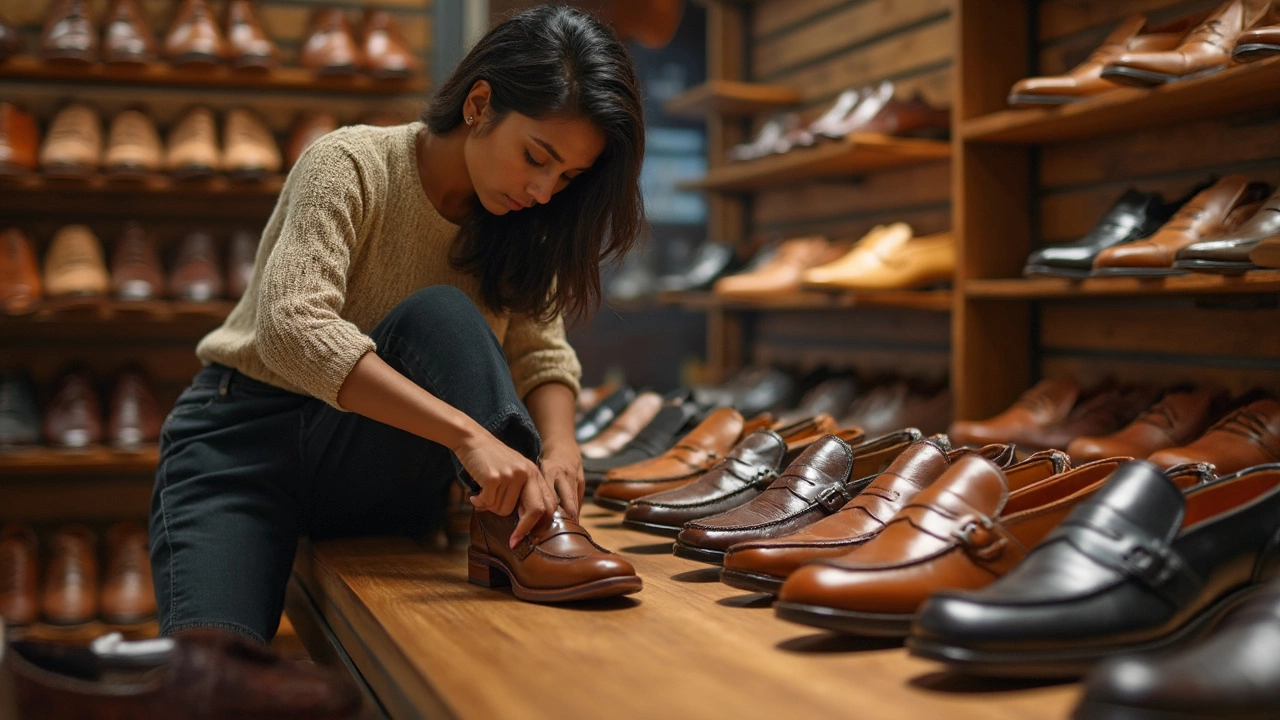Sizing Guide: How to Find the Perfect Fit for Clothes and Shoes
When talking about Sizing, the process of determining the correct dimensions for clothing and shoes to ensure a comfortable and flattering fit. Also known as fit measurement, it plays a crucial role in everyday shopping, whether you’re picking a blazer, a pair of trainers, or a summer dress.
Accurate Fit, the way a garment or shoe conforms to your body shape is the result of good Measurement, the act of recording body dimensions using a tape, ruler or digital tool. Without reliable measurements, a size chart becomes just a table of numbers that rarely matches reality. In short, sizing requires a clear measurement, a trustworthy size chart, and an understanding of how fit varies across brands.
Why Accurate Sizing Matters
Imagine buying a slim‑fit jacket that feels tight across the shoulders or a pair of slippers that slip off the moment you stand. Those problems stem from a mismatch between your actual body data and the product’s listed size. Good sizing encompasses three things: precise measurement, an appropriate size chart, and awareness of how different categories—like trousers, dresses, or footwear—interpret numbers differently. For example, a men’s waist size of 32 inches often translates to a European size 48, while a women’s dress size 6 might be a UK 10. Knowing these conversions saves time, money, and frustration.
When you shop for shoes, Footwear Size, the specific length and width measurement used to match a shoe to a foot takes on extra importance because the foot bears weight all day. A too‑tight sneaker can cause blisters, while a loose sandal can lead to trips. Brands often use different sizing systems—US, UK, EU, or even internal scales—so a reliable size chart that includes foot length in centimeters can bridge the gap. This is why many retailers provide printable charts and encourage customers to measure their foot from heel to the longest toe.
Fit isn’t just about numbers; it also involves how a garment drapes. A well‑tailored suit will have stitching that aligns with shoulder seams, while an ill‑fitted dress may bunch at the bust or hips. Understanding the relationship between measurement and fit helps you spot quality cues. For instance, a blazer that follows the natural curve of your chest without pulling indicates that the listed chest measurement aligns with your actual size. Conversely, a shirt that pulls at the cuffs suggests a mismatch in sleeve length, which the size chart should have clarified.
Many of the articles on this page touch on sizing from different angles. The “Slippers Cons” piece warns about hidden comfort drawbacks that often arise from poor shoe sizing. The “Trainer Shoe” guide explains how sport‑specific fit differs from casual wear. Our “How to Spot a Cheap Suit vs an Expensive Suit” article highlights stitching and tailoring details that become apparent only when the size is right. Together, they show that correct sizing influences everything from foot health to overall style credibility.
For denim lovers, the skinny‑jeans posts illustrate how waist and inseam measurements affect the silhouette. A waist that’s too small will dig in, while an inseam that’s off by even a centimeter can change the entire look. The “Jacket vs Coat” article reminds readers that length measurements matter more for outerwear than for tops. And the “Best Shirt Colors to Appear Friendly” piece subtly hints that a well‑fitted shirt makes color perception more flattering.
Putting all this together, the key takeaway is simple: start with accurate measurement, consult a reliable size chart, and consider how fit varies across clothing types and footwear. By treating sizing as a process rather than a guess, you’ll avoid common pitfalls like slipping slippers, uncomfortable shoes, or ill‑fitting suits. Below you’ll find a curated collection of articles that dive deeper into each of these aspects, offering practical tips, buying guides, and expert insights to help you master the art of perfect fit.
Leather Shoes: Should You Size Up or Down?

Trying to figure out whether to size up or down in leather shoes can get confusing. This article unpacks how leather reacts to your feet and why shoe shape, brand, and personal comfort really matter. Learn why leather shoes rarely fit perfectly out of the box, when to consider going up or down a size, and what to expect as they break in. You'll also get practical tips for testing fit before you buy, plus the do's and don'ts if you're shopping online. Make sizing checks easier and avoid painful mistakes with these clear guidelines.
- May 29, 2025
- Violet Greenfield
- 0
- Permalink